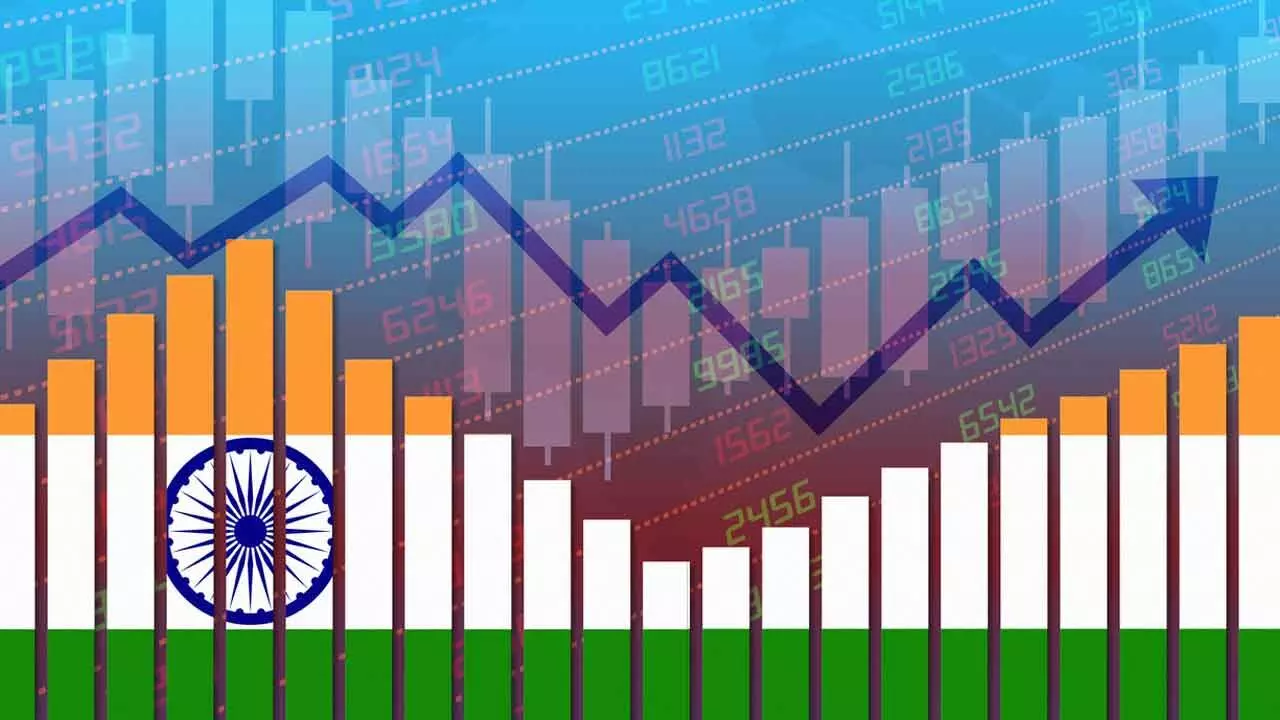Are India’s FY26 Growth And Inflation Risk Skewed To The Downside?
Are India’s FY26 Growth And Inflation Risk Skewed To The Downside?

The tariffs imposed by US President Donald Trump are more severe than expected. It will be visible in Q1 itself in that it could see further downside for Indian equities. Imposition of reciprocal tariffs of 27 per cent since April 2 that marks the beginning of the next stage of the trade war, will have a negative effect on India and, being relatively less impacted than other Asian countries, is a minute silver lining to a dark cloud. At the margin, loss in exports to the US is a setback in absolute terms. The second-order effect will hurt India more. Experts are now assuming a severe US recession and a significant short-term correction in global commodities. Metals will be hit the most, followed by technology, whose higher weight has a bigger market impact. Autos and chemicals are also at risk. Financials are a strong short-term trade as it benefits from both, being immune to global turmoil and benefiting from RBI’s aggressive moves that have turned the system liquidity-positive.
Analysts prefer playing this through NBFCs and not banks, as they benefit more in the short term. They remain neutral on IT; while earnings are at risk, valuations are 10 per cent away from levels when the sector typically starts turning around. The preferred sector remains consumer discretionary, including autos, especially now that the RBI is creating conditions for a recovery in consumer lending. There seems to be a near-zero probability of India imposing retaliatory tariffs on the US. There is a likelihood of some negotiations and India lowering import duties. In general, one does not see any obvious areas where these cuts pose a significant earnings risk to domestic companies. Domestically, Emkay sees the possibility of India intensifying pro-cyclical policies to combat contradicting impulses of slowing global trade. The central bank is already easing up on multiple fronts, and that process may intensify. There seems to be little chance of a change in fiscal policy, as the Centre would not risk macro-financial stability by easing both, monetary and fiscal policy simultaneously, in a period of such intense global uncertainty.
There are potential developments that could move the economy, earnings, and markets either way. The big positive would be a rollback of these tariffs, especially if resultant US recession is more severe than anticipated. The global coordinated monetary easing is the other upside, and India would be well positioned to attract the resultant global flows into risky assets and equities. On the downside, an intensification of these tariffs would pose further earnings risks which would be compounded by additional P/E derating. India’s exports to the US are only two per cent of GDP. In the given scenario, its US exports could drop by $30-33 bn or 0.8-0.9 per cent of GDP at 26 per cent tariffs. Thus, the risks to the current fiscal’s growth of 6.5 per cent are materially downwards. RBI’s likely 25bps rate cut this week is bound to enhance liquidity in the system.

